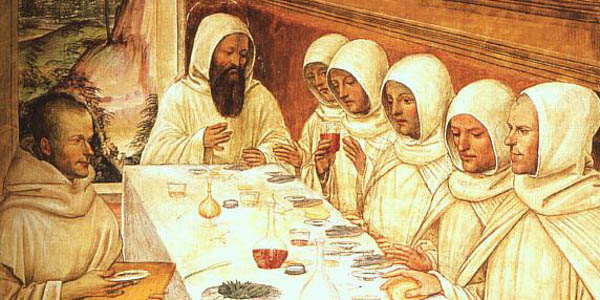Lenten Campaign 2025
This content is free of charge, as are all our articles.
Support us with a donation that is tax-deductible and enable us to continue to reach millions of readers.
Historian David Snowden, in his book Flans and Wine, has published recipes used by Benedictine monks in 14th-century England, revealing that those living in the abbey survived on far more than bread alone.
The recipes, used by Benedictine monks from Evesham Abbey, founded in 701, indicate that the monks had, in fact, rather sophisticated palates.
Many of dishes were seasoned with hard-to-get herbs and spices, in keeping with the wealth and power of the abbey at the time. (Later, during Henry VIII’s reign, it was plundered and demolished.)
“They were very expensive — one way of showing off the wealth of the abbey was to produce very rich, spicy food,” Snowden told the BBC.
“For example a lot of these recipes call for lots of saffron because it was worth literally more than its weight in gold — the Benedictines could afford the best and they made sure they got it,” he said.
Recipes include mussels cooked with leeks and Saracen’s sauce (a spicy red sauce), crab meat fried in olive oil and mixed into scrambled eggs, and dishes containing oysters, ox tongue, veal and wild boar.
During Lent, when the consumption of meat would have been prohibited, Snowden suggests the monks may have dined on “Cawdel of Muskels,” mussels steamed in white wine, seasoned with leeks onions, ginger and a pinch of saffron, finished off with a dollop of cream.
In his book, Snowden adapted the recipes, which were written in early English, for today’s use, using modern measurements and ingredients available in the local grocery store — especially if your local grocer caters to those with gourmet tastes.
Snowden suggests that the monks’ rich diet may have affected their longevity.
“They were not very healthy and the average age at death was 35 — most of them died from bronchial diseases, probably caused by faulty diet — but then the average life span was not very long,” he told the BBC.
To try some of these medieval monks’ recipes, Flans and Wine is available online.

